Influencer Marketing Hub sets itself apart from conventional review platforms through the involvement of Influencer Marketing experts such as Werner Geyser, Djanan Kasumovic, Camille Kennedy, Dave Eagle, and other notable industry figures. This expert team brings a profound understanding of the Influencer Marketing landscape, assessing tools and platforms with an insider’s perspective on capabilities, experience, and industry acumen. Unlike user-generated review platforms, Influencer Marketing Hub’s evaluations are rooted in extensive firsthand experience and direct interactions with the tools and platforms in question. This ensures that the reviews are not only trustworthy but also deeply informed. High-caliber brands like Viral Nation, The Influencer Marketing Factory, and AWISEE undergo rigorous monthly evaluations, highlighting the platform’s commitment to identifying and showcasing top-tier solutions in Influencer Marketing and beyond.
Influencer Marketing Hub has consistently been recognized by leading media outlets for our authoritative data, findings, and insights within the Influencer Marketing landscape. Our platform is frequently cited as a trusted source of information, demonstrating the value and impact of our work in shaping industry standards and practices.
Influencer Marketing Hub employs an expert-driven methodology to evaluate Influencer Marketing agencies, ensuring that our recommendations are both reliable and comprehensive. This approach is designed to help businesses and individuals find the best agencies to meet their specific Influencer Marketing needs. Here’s how we assess the various agencies like Viral Nation, The Influencer Marketing Factory, and AWISEE:
When your brand is about to push a new product into market, the stakes are intense: every creator post, every content asset, every impression must move you from awareness to trial and conversion. Agencies that simply deliver “influencer buzz” no longer suffice. What matters is an influencer ecosystem built for launch velocity: real-time performance dashboards, creator waves aligned to cadence, rigorous measurement, and integrated activation that bridges social content with retail or DTC logic.
Early buyers consistently flag 4 breakdowns:
- attribution that disconnects from sales;
- creator operations that collapse under tight go-live windows;
- compliance and transparency gaps that expose brand risk; and
- platform or macro pivots that derail unprepared launches.
Choosing an agency that treats your launch like a media event, not a social campaign, is what separates short-lived attention from sustained market entry.
1. Viral Nation
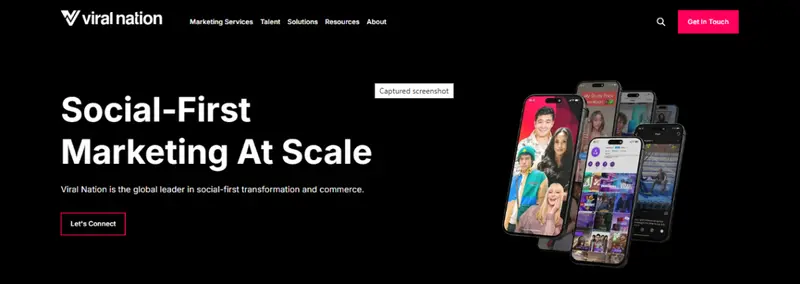
Viral Nation is built for velocity launches where social is the primary channel. Their e.l.f. Cosmetics restock shows exactly how they treat a drop: align the story with a creator who already “owns” the conversation, build a campaign spine that culminates on launch day, and pair it with distribution mechanics that convert curiosity into sell-through. Results are hard to argue with—50K units in 10 hours, #1 on TikTok Shop across all categories, and 18.9M views within a day across just ten assets, supported by $857K in EMV. That’s a fully-formed launch machine, not a one-off post.
They also handle destination and identity launches, not just products. Walmart Land on Roblox needed creator-led awareness for a brand-new property; the campaign delivered 66M impressions, 4.7M engagements, and 235K visits—numbers you only hit when creative, distribution, and platform fit snap together. For smartwater’s #TheDrop refresh, Viral Nation combined live events in LA and NYC with social amplification to reach 3M people in two days, generating 67K engagements and 5K+ attendees—evidence they can fuse IRL moments with social-first content to kick off a new chapter for a brand.
Two infrastructure advantages matter to launch marketers.
First, their Social Content Studio + Performance Marketing stack means the team can pivot from organic hype to scaled paid in hours, not weeks.
Second, their brand-safety stack (Viral Nation Secure™) and CreatorOS™ streamline creator selection, approvals, and monitoring—critical when your launch window is unforgiving. Their deep creator bench (900+ represented) and vertical range (beauty, beverages, gaming, tech) make it easier to architect waves—tease, reveal, how-to, and retail push—without repeating voices. If your brief requires a compressed timeline, measurable revenue impact on day one, and social-commerce integration, Viral Nation’s playbook is purpose-built for that job.
2. The Influencer Marketing Factory
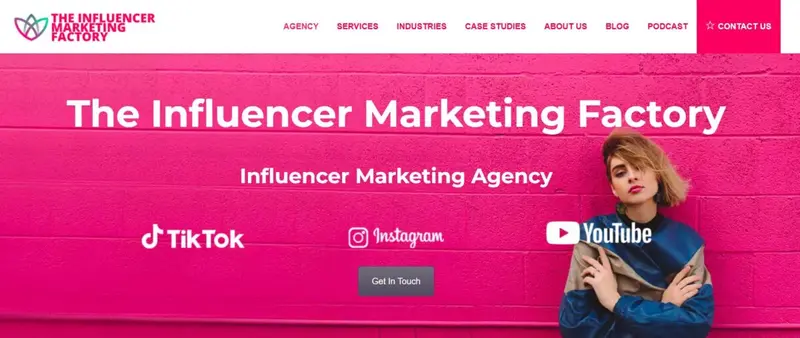
If your launch needs structured research, disciplined creator casting, and multi-platform content that educates while it excites, The Influencer Marketing Factory is built for that. Their product-launch service formalizes the whole arc: research to sharpen positioning (quant surveys up to 5,000 responses and moderated creator panels), content and UGC with clear usage rights for paid, Spark Ads for controlled scaling, and talent management that moves fast without legal friction.
The case work shows repeatable patterns that matter to launch marketers. In consumer tech, the ASUS Zenbook push paired creators’ format fit with feature education—tying narratives to OLED displays and processors—and delivered 500K+ views while concentrating reach in YouTube subscribers for deeper consideration. BenQ’s GS2 activation turned “movie nights” into the concept, then sequenced Stories + posts to drive taps and traffic at the exact moment of intent: 1.16M Story impressions, 192,875 likes, and 11,962 sticker taps across 49 creators. Aura Frames used seasonal timing and TikTok native creativity to become a giftable “must-have,” delivering 8.6M likes and 1,833 clicks from a five-creator pod.
Automotive launches require different economics. Their OMODA and Hyundai SANTA FE programs show they can scale to high-consideration categories by stacking influencer audiences (10M+ followers) and cross-platform placements to drive pre-order-stage awareness. Across these launches, the throughline is consistent: pre-brief creators on the “job to be done,” build platform-native formats that showcase the product’s use case, and reserve budget for Spark Ads and paid IG to hold the line on ROAS during the volatile first 72 hours. If you want a launch partner that treats research, rights, creative, and paid as a single system—rather than separate vendors—IMF delivers that operating model.
3. AWISEE
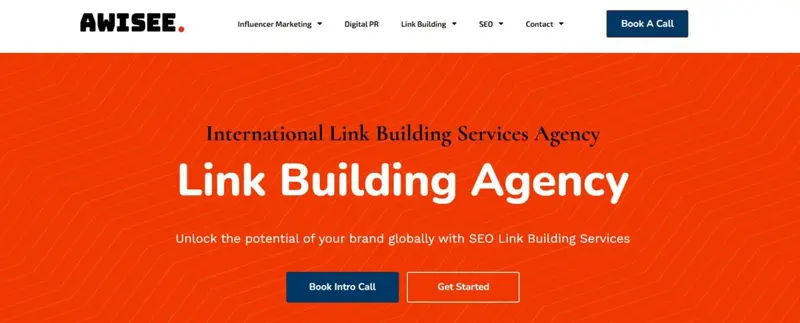
AWISEE is a nimble choice when “launch” means TikTok Shop first. Their entire European TikTok Shop practice is designed around the jobs that stall most debuts: getting the shop set up correctly, populating it with the right PDP content, recruiting creators who will actually sell, and wiring affiliate economics and paid amplification so you hold momentum after day one. The positioning is explicit—help brands launch and scale new products on TikTok Shop—and they bring the certified partner layer that reduces the operational friction you encounter the first time you push a catalog live.
For launch marketers, the advantage is focus. Rather than spreading thin across dozens of channels, AWISEE concentrates on TikTok-native commerce: live shopping to simulate an event; short-form explainers to demonstrate the product; affiliate links and Shop vouchers to close the loop. They complement that with YouTube influencer campaigns for deeper education and with Influencer Scouting when you need category-fit creators to front a SKU line. If your roadmap includes a multi-country rollout, their market pages (Italy, Czech Republic, Chile) point to a playbook for localized creator selection and cadence—useful when testing the same positioning in multiple languages before scaling paid.
Because the team is fluent in TikTok Shop’s mechanics, you can stage a phased go-to-market: pre-launch whitelisting with select creators, launch-day lives with bundled offers, and post-launch Spark Ads to keep the flywheel spinning. If your brief is “we’re launching our first product on TikTok Shop in Europe and need hands on the wheel from setup to scaling,” AWISEE’s single-channel depth, certified status, and geographic flexibility make them a sharp, practical partner.
4. Linqia

Linqia approaches launches like a retail marketer: orchestrate the creator plan around where the product will actually be bought, and sequence content to match the shelf and the season. The Gerber Lil’ Beanies rollout is a blueprint—324 influencers across parenting/food/active living verticals, timed with availability at Publix, Target, Walmart, and Kroger, and executed in two flights to build momentum then convert. That’s not just “reach,” it’s launch discipline aligned to retail media realities.
Their beverage and grocery cases reinforce the pattern. Three Olives introduced a new flavor into a crowded category by reframing usage occasions (day + night) and using creator storytelling to distinguish the SKU at launch. Beck’s leveraged a cultural hook (Artist Label Series) with 27 creators to reach 6.9M consumers—art-driven packaging launches benefit from this kind of visual creator system. Stella leaned into holiday timing with original recipes, proving Linqia’s sensitivity to category peaks when a product is most likely to be tried. JBS’ “Beefitarian” entry shows how awareness pushes can compound into owned-search gains (trending hashtag; first-result SERP presence), which matters after the initial spike.
Under the hood, Linqia’s CPG playbook codifies launch best practices like micro-influencer casting for efficient awareness and action, then governing programs by CPA when the goal is signups or trials. Their case library is deep, so you can find adjacent category evidence to inform your plan. If your brief is to introduce a new CPG SKU into mass retail or retailer .com, Linqia’s sequencing—pre-flight tease, availability-timed waves, retailer-specific CTAs—gives you the highest odds of seeing in-store or cart activity right when you need it. It’s a retail-grounded approach that’s ideal for launches where the shelf (physical or digital) is king.
5. Amra & Elma
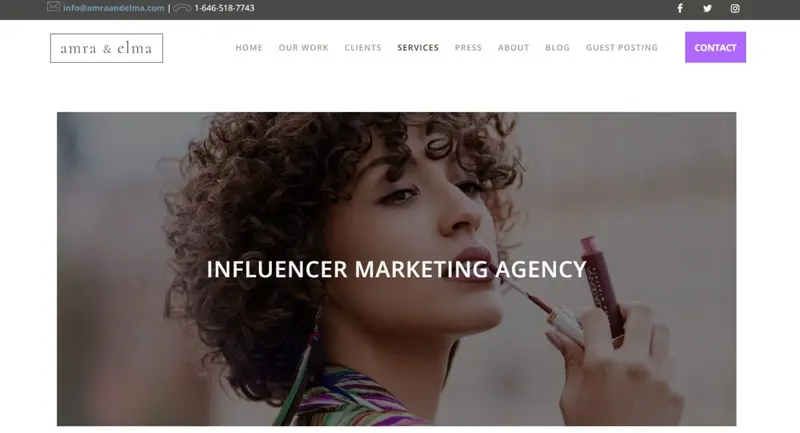
Amra & Elma operate like a launch strike team: they combine high-fit influencer seeding with media buying, PR, and events to compress awareness curves into the days that matter most. For Anthropologie’s Puristry debut, they mobilized 50–100 micro-influencers per month and delivered 305 pieces of content, 3.5M cumulative followers, ~500K impressions, and 3.1K advocate sign-ups in the first 90 days—evidence of disciplined throughput and measurable post-launch momentum.
Category versatility shows up in outcomes. For Uber Eats’ New York rollout, they targeted foodie and fashion voices across boroughs, netting 58 creator assets, ~655K impressions, and a $0.10 average CPE—proof they can drive efficient action during geographically constrained launches. For Timberland’s Earthkeepers eyewear drop, they pivoted the message to sustainability and delivered 500+ posts, 3.4M estimated impressions, and ~200K engagements over three months.
What separates their launch craft is operational rigor after the unboxing moment. With Power Up Snacks, they paired sustained micro-influencer throughput (462 creators; 554 posts) with a landing-page-per-ad structure to isolate incremental lift from creators versus paid units, then pushed 7M+ paid impressions and achieved 3.5x ROAS. That stack—creator volume, incrementality measurement, and performance creative—keeps launches from peaking and fading.
Choose Amra & Elma if you need a partner that can orchestrate hundreds of fit-for-purpose posts in weeks, stand up events and PR to broaden narrative surface area, and deploy paid media to extend the launch curve—without losing line of sight to CPE, ROAS, and usage-rights governance. Their case work in beauty, eyewear, food delivery, and snacks shows repeatable mechanics and the willingness to tailor selection criteria to the product’s adoption triggers.
6. Influencer.com
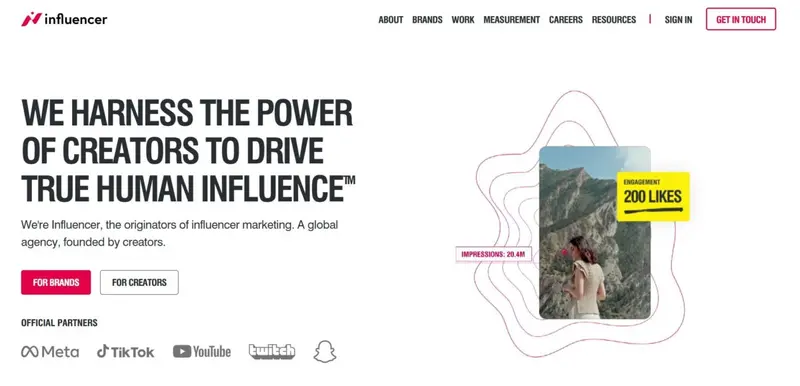
Influencer is built for launches that need to scale fast, get talked about immediately, and prove impact in real numbers. The agency is founder-led by a creator and an operator, and it still behaves like a creator company: everything revolves around relevance to a specific audience in a specific moment. That is critical in a launch cycle, where you get one shot to convince the right crowd that this thing is worth trying now.
Their operating backbone is Waves, Influencer’s proprietary, end-to-end campaign platform. Waves handles creator sourcing, KPI-based approval, brand safety review, real-time performance tracking, and live reporting. During a launch, that means marketing leadership can watch awareness, engagement, and sentiment move hour by hour, not two weeks later. If a certain creator is driving in-store traffic with a “you need to taste this” moment, that content can be amplified and cloned across markets immediately. If a message underperforms, it gets cut before budget is wasted.
Influencer also builds activations that merge “first access” with social proof. The agency engineers pop-up tasting/try-on/experience environments, seeds them with vetted creators, and captures content built around disbelief (“this shouldn’t exist, but it does”), especially for Gen Z. That framing drives curiosity, footfall, and repeat visit intent in the first days of a launch.
Finally, measurement is treated like paid media. Influencer mandates brand lift studies, tracks perceived value and purchase intent, and reports outcomes in the same language as other acquisition channels. Post-launch, they can shift from “activation partner” (burst) to “agency of record” (sustain), keeping winning creators and scrapping weak ones. For a marketer who needs to enter market, dominate conversation, and justify budget in the same sprint, this is a launch machine with instrumentation baked in.
7. Deviate Labs

Deviate Labs is built for founders and CMOs who are under pressure to prove demand before the board approves real budget. Their entire posture around launches is: weaponize curiosity, capture the lead, then optimize conversion relentlessly. The agency treats pre-launch as critical territory. They’ll spin up a landing environment, tighten the headline and CTA until it stops leaking, and then run creative designed to make early adopters feel like they just found something forbidden or first-access — which is exactly how you get people to hand over an email or payment method before public release.
Two elements stand out for launch marketers.
First, Deviate Labs operates like growth engineering, not brand PR. They bring together influencer-style reach, stunt-driven virality, and conversion architecture under one owner. That means an on-platform teaser or short-form creator mention doesn’t just “drive awareness”; it lands on a page already tuned to harvest that spike. This is especially valuable in categories where hype decays in hours — crypto, gaming, emerging tech, consumer apps — because they collapse the funnel from first exposure to signup into a single session.
Second, the agency keeps score like a CFO. They talk openly about getting 10,000 beta signups on ~$350 spend, about iterating headlines through structured A/B testing, about mapping awareness into promoters via their ASP™ Sales Flywheel framework. That tells you they won’t hand you vanity metrics. They’ll hand you a waitlist, active trials, and proof that strangers care enough to move. If you’re launching something new and need signal — fast — Deviate Labs is built for that exact stage.
8. Luitrix
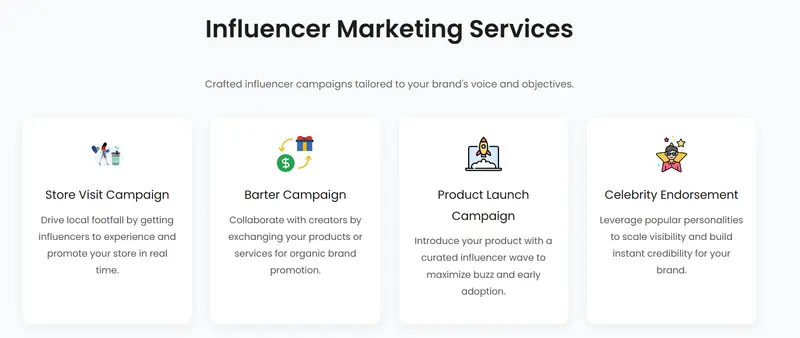
Luitrix is structured for fast, localized, high-volume rollout in the Indian market — exactly what you need if you’re launching a new SKU, opening a new location, or pressure-testing messaging in a specific city before scaling nationally. They don’t just “do influencer marketing,” they package launch formats as products: Product Launch Campaigns (orchestrated creator waves built to generate immediate awareness and early adoption), Store Visit Campaigns (drive physical footfall and film it), and Barter Campaigns (seed inventory to creators and capture authentic proof-of-use without heavy spend).
The pricing model matters. Most global influencer agencies force you into bespoke scopes. Luitrix publishes tiered plans starting at $180 USD for early-stage brands, then scales up through Growth and Impact plans, and finally Custom for celebrity or national visibility pushes. That structure lets a marketer treat launch spend like a testable media line item and then accelerate only when there’s signal.
Operationally, Luitrix leans into automation, analytics, and AI. They’re actively building a tech platform so creators onboard directly, which shortens sourcing and negotiation cycles — the biggest time sink in Indian influencer work. They also screen and position creators (regional, Bollywood-level, viral short-form talent) based on the launch’s target geography and cultural tone, not just follower count. That’s critical in India, where adoption lives in regions and languages, not just national English Instagram.
Finally, the brand roster — Lakmé Salon, DMart, Apollo Pharmacy, Swiggy, Casagrand — signals that Luitrix already supports launches in beauty services, mass retail, healthcare, on-demand delivery, and real estate. Those are high-speed, credibility-sensitive environments. If you need to open a door, fill it with paying traffic, and show ROI this month (not next quarter), Luitrix is built around that exact pressure.
Launch-readiness quick-compare: Product-Launch influencer agencies
Below is a side-by-side snapshot of the three criteria that matter most for a marketer choosing an agency for a product launch: performance infrastructure, scalable creator deployment, and integration that sustains momentum beyond day one.
| Agency | Performance infrastructure (tools, dashboards, measurement) | Scalability & creator tiers (speed to volume) | Launch + post-launch integration (rights, retail, sustain) |
| Viral Nation | Proprietary stack including CreatorOS™ and Secure™ for vetting, safety, analytics, and workflow. | Global operations; micro-to-mega influencer programs; scalable from targeted to global rollouts. | Integrated influencer + paid performance + content studio + experiential for spike and sustained activation. |
| The Influencer Marketing Factory | Product-launch service with KPI tracking for visits, clicks, promo-codes, and ROI across TikTok/IG/YouTube. | Global agency footprint and platform coverage built for multi-market launches. | End-to-end launch flow from strategy and talent to content and tracking; dedicated Product Launch Marketing. |
| AWISEE | Data-driven selection and tracking; campaigns positioned to deliver measurable awareness, engagement, and sales. | Works with nano, micro, macro, celebrity creators across EU/global; multi-platform execution. | Explicit Product Launches & Announcements and localized European rollouts. |
| Linqia | Platform informed by 1.5B data points; single dashboard for approvals, rights, reporting, and paid amplification. | Tech-enabled, full-service model for scaled creator output and distribution. | Start-to-scale activation with content rights and paid amplification to extend beyond launch spike. |
| Amra & Elma | KPI-led strategies optimized for positive ROI; Product Launches listed among core outputs. | Full-service production, events, and media buying support fast creator waves and content volume. | Influencer + media buying + PR/SEO + content to sustain growth after the initial surge. |
| Influencer (Influencer.com) | Waves platform supplies real-time transparency, creator tracking, approvals, and proof of success. | Creator-founded global agency built to execute across markets and timelines. | End-to-end platform + app ecosystem to accelerate activation and content approvals post-launch. |
| Deviate Labs | Pre-launch funnel engineering with concrete acquisition metrics (e.g., 10,000 beta sign-ups on $350). | Growth-engineering and stunt activations that generate rapid attention spikes when needed. | Unified landing pages, CRO, influencer, and paid media to maintain traction after release. |
| Luitrix | Tech-enabled operations (automation, analytics, AI) supporting streamlined launch execution. | Tiered plans and creator mixes (nano→celebrity) for predictable scaling speed. | Packaged Product Launch Campaigns, Store Visit and Barter formats to pair social buzz with retail/region lift. |
What matters most for you: lock down measurement, rights, and pacing before you brief talent. Require:
- Real-time visibility (platform dashboards, lift or intent metrics),
- Explicit paid-amplification and usage-rights terms for best-performing creator assets (so you can keep winning content in-feed through weeks 2–6), and
- A sustain plan that ties creator content to retail or DTC outcomes (store visits, affiliate/creator commerce, remarketing).
Those 3 levers predict whether your launch peaks for 48 hours—or compounds for 90 days.
Final Thoughts
In your agency search, focus first on how each contender measures what matters—lift, intent, conversions—not just impressions. Demand creator operations built for urgency, with logistics, rapid seeding, and content usage rights baked in. Insist on a post-launch plan: assets that feed paid, remarketing, retail-foot-traffic or commerce layers beyond day one. And ask for a contingency roadmap, so when platforms change or external shocks hit, your launch still lands. A true product-launch influencer partner delivers more than posts; they deliver momentum that lasts.






